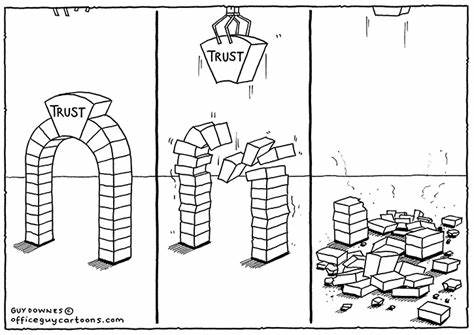Continuous and significant advances have been made by us in automation, including infrastructure as code, pipeline as code, self-service, upgrade, and vulnerability remediation automation. However, there has been a noticeable hesitance in the adoption of these automation solutions, prompting the question: “Why might an engineer choose not to adopt the available automation?”
TRUST
My hypothesis is that engineers will keep doing tasks manually unless they trust the automation and see its benefits. For example, we inherently trust Visual Studio automation because no engineer creates solutions and project files by hand anymore. People trust it because they are familiar with it and believe Microsoft maintains it with current best practices and innovations. Early versions of Visual Studio generated code that I sometimes questioned. Today, however, selecting an application type in the new project wizard is straightforward and feels normal.
If trust is the salt in automation, what is the pepper?
My former leader and mentor always reminds me to ensure that we can answer the question: “what is in it for me?” Automation provides efficiency gains, accuracy, scalability, cost reduction, faster time to market, consistency, reliability, compliance, auditability, and enables continuous improvement. However, it does not address “the” question and often evokes concerns among engineers about making humans redundant, reminiscent of the industrial revolution.
We need messaging that addresses the mentioned benefits and emphasizes that automation eliminates many repetitive tasks. This allows engineers to spend more time on innovative and impactful work. For instance, generative AI, self-service automation, and upgrade automation are designed to assist engineers by freeing up time, reducing mental fatigue, and increasing creativity. The goal is not to make human roles redundant but to balance the work-life dynamic and enable improved, faster performance.
Importantly, the time saved through automation should not solely be used to increase business output, as this would undermine the advantages and progress made with automation.
So, if trust is the salt, knowing “what is in it for me” is the pepper!
The VALUE of automation
So what, apart from obvious benefits, what are some key values of automation?
- Automation excels at repetitive tasks.
- Automation speeds up repetitive tasks like testing, deployment, and data processing, increasing productivity.
- Automation reduces human error, ensuring consistent and accurate task performance.
- Automation allows users to focus more on complex problems, boosting job satisfaction, innovation, and productivity. I intentionally did not bold productivity, as some engineers may question this with "So, I am not productive?", which is obviously far from the intent and truth.
Automation with human involvement is a win-win. Together they create a symbiotic relationship that drives true progress.
The DARK side of automation
Although automation has become a vital part of engineering environments, it also has a dark side we need to be aware of.
- Automation lacks creativity and intuition for solving complex problems.
- Each organization needs customized and optimized automation - a challenge evident from our shared v2 CI/CD blueprints.
- Human oversight is essential to prevent errors. Have you ever considered living next to an autonomous nuclear plant or flying in a cockpit-less aircraft?
- Automation lacks empathy and emotional intelligence for complex customer support.
- Automation requires consistent, standardized, and stable environments.
- AI and data processing automation raise ethical concerns.
- Continuous maintenance is needed to keep automation relevant and error-free.
There is no doubt that automation is a powerful tool, but it needs people to guide, improve, and ensure its successful integration.
While writing this blog post, I have realised that to address the initial "noticeable hesitance" about automation, we need to raise awareness of our automation, collaborate with engineers to show its value, and gradually build trust to improve adoption.
That is my take. What are you thoughts?


